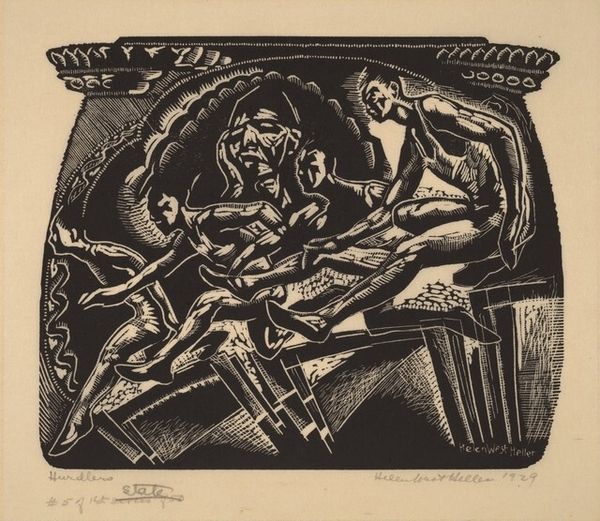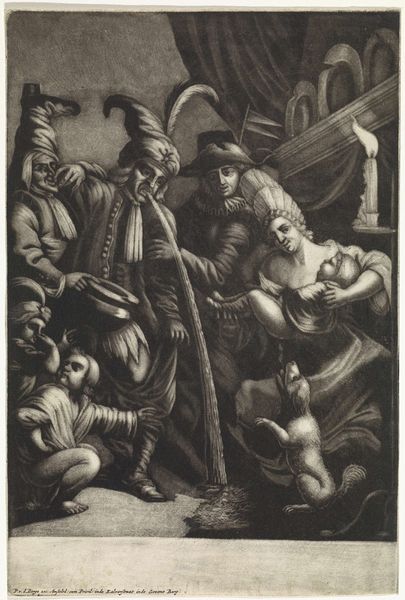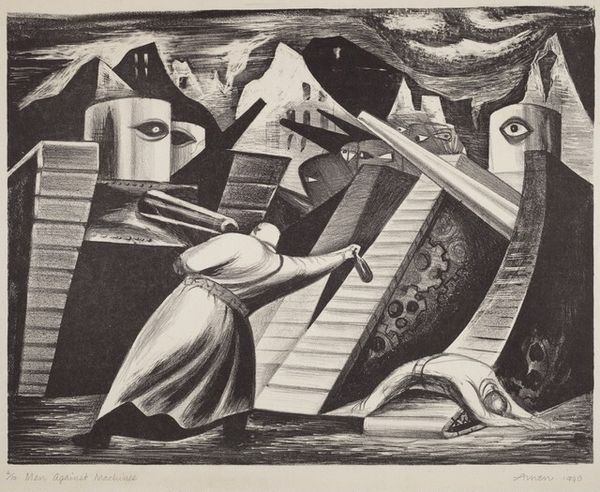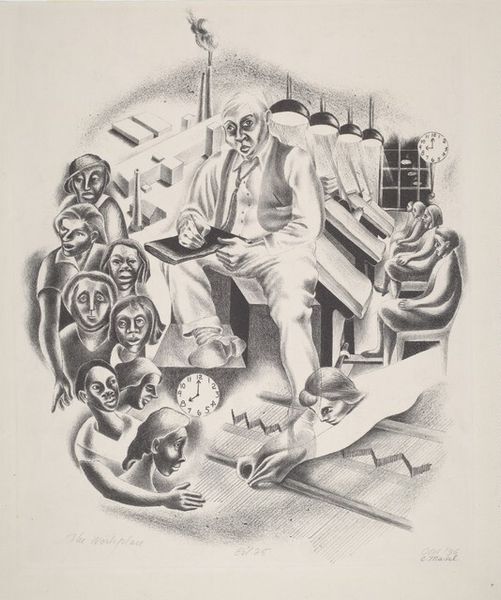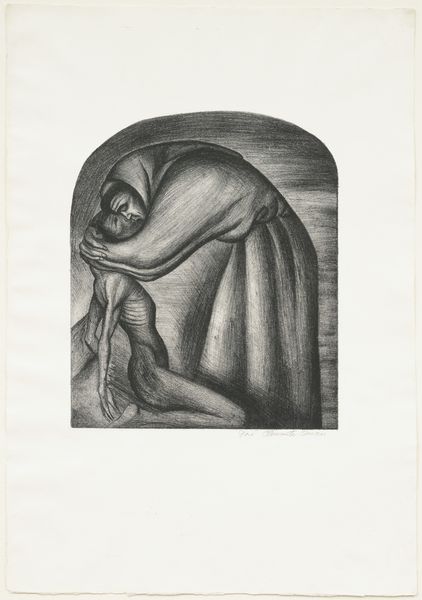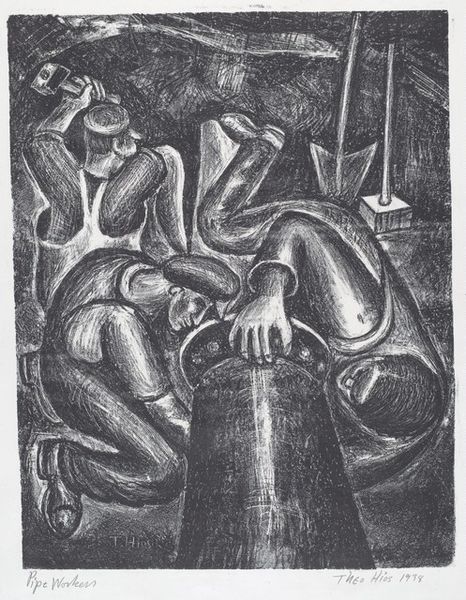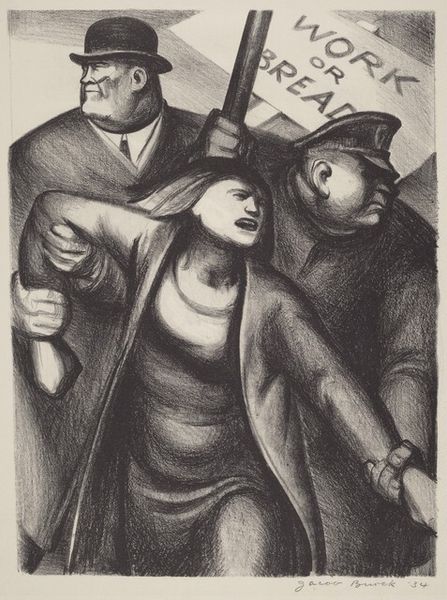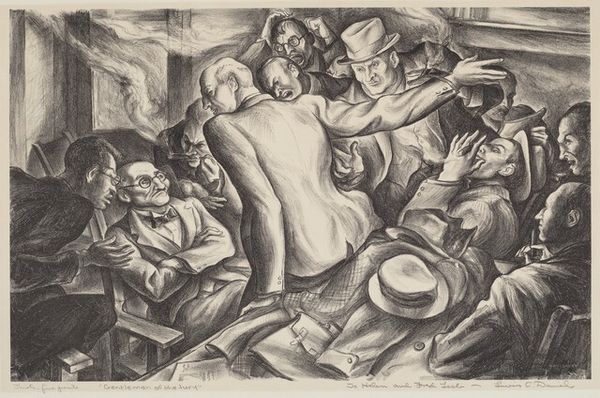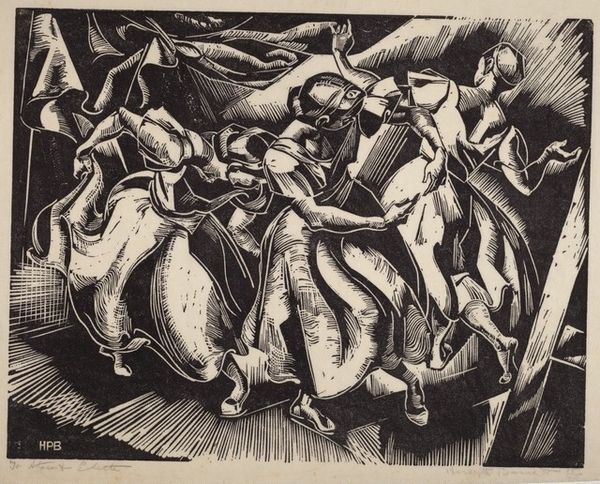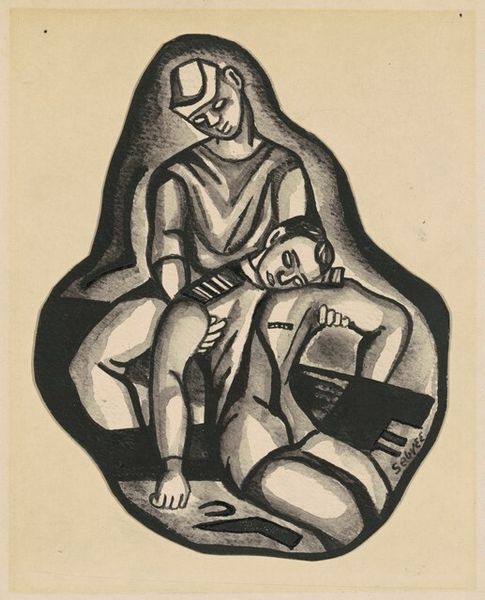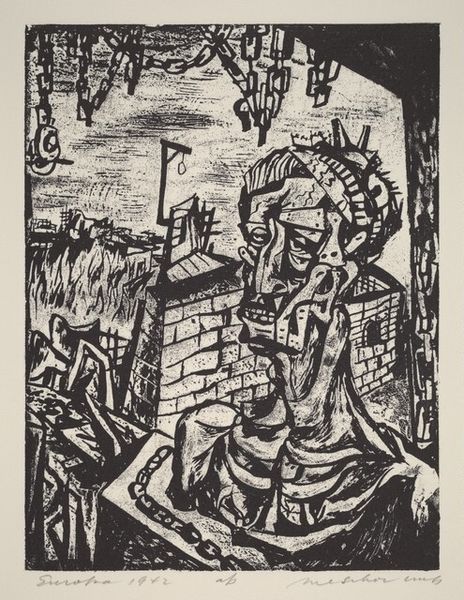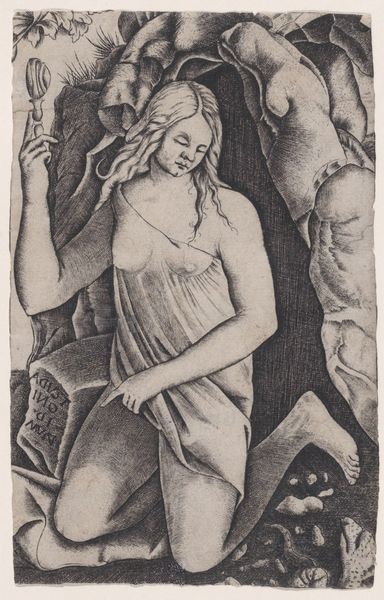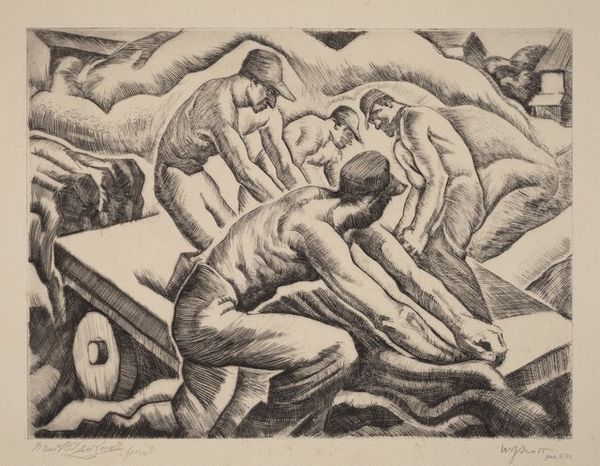
Dimensions: Image: 259 mm diameter (tondo). Sheet: 310 x 330 mm
Copyright: National Gallery of Art: CC0 1.0
Curator: Here we have Abraham Joel Tobias's print, "Bombardment," created in 1939. The medium itself, a stark black and white print, contributes significantly to the artwork's emotional power. What's your first impression? Editor: Utter devastation. It’s like a dark Renaissance painting—grief and geometry colliding. The central figure, a woman with a child, seems suspended in a bubble of tenderness amidst total collapse. Curator: Absolutely. Notice how Tobias utilizes geometric shapes and stylized figures? This reflects not just the influence of modernism but also potentially connects to the socio-political climate of the time. Think about the looming Second World War and the mechanization of warfare. Editor: Yes, there’s a sense of industrial horror underlying the whole piece. But the print medium is interesting—it democratizes the image, mass producing the grief. I almost want to touch it to see how the ink sits on the page. It's visceral. Curator: Indeed. And consider how printmaking allowed Tobias to distribute this message widely, making it accessible beyond the confines of a gallery or museum. This aspect challenges traditional notions of high art by grounding the piece in a broader social context. Editor: I can’t help but focus on that central mother and child. She embodies a plea, doesn’t she? Almost like a modern-day Madonna offering humanity one last embrace before the end. Her fragility is what lingers. It feels unbelievably intimate despite all the angular despair around her. Curator: That's insightful. And to bring it back to materials, the contrast achieved through the printmaking technique – the bold lines, the areas of shadow – accentuates that tension, the impending destruction juxtaposed with the vulnerability of human connection. Editor: Well, that mix of tenderness and terror has definitely left its mark. The world was clearly on the edge of something awful back then, and Tobias captured it in that mother's gaze. Powerful. Curator: It speaks to the way art, especially printed art, can reflect, respond to, and even attempt to shape our understanding of momentous historical events and human cost.
Comments
No comments
Be the first to comment and join the conversation on the ultimate creative platform.
